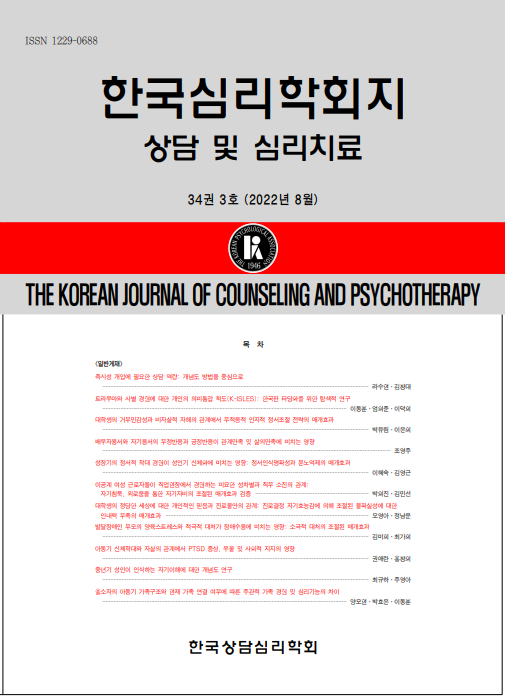open access
메뉴
open access
메뉴 ISSN : 1229-0688
ISSN : 1229-0688
This study examined whether the interpersonal trauma of romantic breakups can lead to growth, based on the posttraumatic growth model. The relationship between anxious attachment and growth following romantic breakups was examined. In addition, the double mediation model was used to determine whether intrusive and deliberate rumination were sequentially double mediated in the relationship between anxious attachment and growth. Participants were 201 college students who completed surveys. The results indicated that the simple mediation effect of intrusive rumination was significant, the simple mediation effect of deliberate rumination was not significant, and the sequential double mediation effect of intrusive and deliberate rumination was significant. This study has implications for counseling. Counselors are urged to verify the posttraumatic growth model used by college students suffering from separation problems, including the role of anxious attachment and rumination. Limitations and recommendations for future research are presented.
